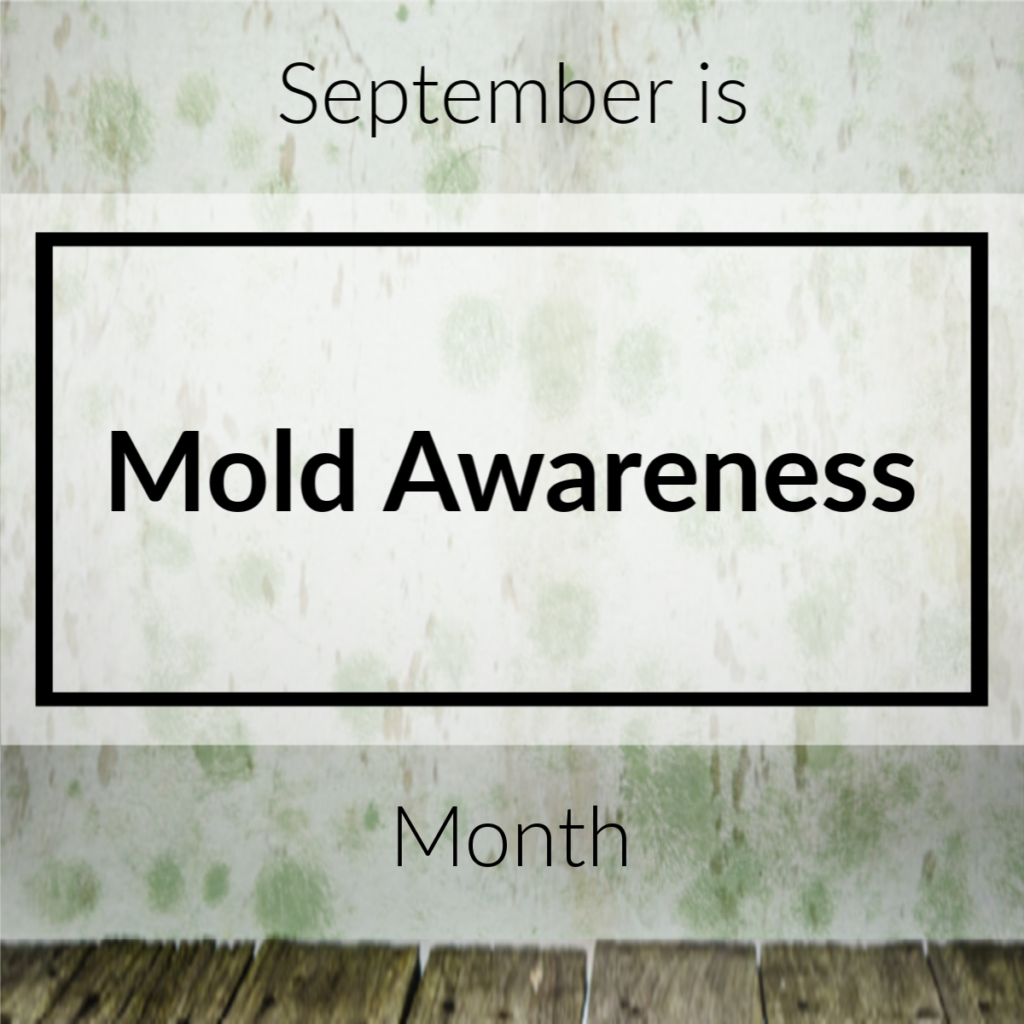
Mold Awareness|Rochester, NY Craftsman Home Remodeling
September is Mold Awareness Month! This month of awareness aims to educate and raise awareness about the different effects that mold can have on your health and home. Exposure to mold and the subsequent mycotoxins produced can wreak havoc on your families health. The more knowledge that you have, the less chance you have of suffering from mold in your home.
Why Does Mold Grow?
In order to understand mold, it’s important to know how and why it grows. Mold occurs naturally and can grow pretty much anywhere where there is moisture present. In fact, mold loves damp, warm environments, and this is where it thrives. Mold spores are carried through the air, and when they find a suitable surface, they reproduce rapidly. There can be mold present even if there is no visual evidence. Make sure you are vigilant if you’ve recently had excess moisture in your home.
Types of Mold
It’s true that some types of mold are a lot more dangerous than others. This is why you don’t need a hazmat suit to take care of moldy leftovers in your fridge! Some of the most common types of mold found within a household include aspergillus, stachybotrys atra (or black mold), and cladosporium. Aspergillus is most often found on food and within systems of the house like air ducts and HVAC systems. Cladosporium is usually green or dark brown with a pepper like appearance commonly found in bathroom areas. Black mold is the most harmful type of mold to have in your home. This type of mold often occurs after a household has experienced heavy flooding or water damage that was not taken care of in a timely manner.
Health Risks
Some of the most common health symptoms experienced from mold exposure are respiratory irritation and flu-like symptoms. Yet, the symptoms experienced can vary from one individual to the next. One person may experience a strange rash, while another can experience chronic fatigue and brain fog. Health risks can be as serious as nervous system damage or extreme asthma symptoms. This is why it is important to act fast when you have found mold in your household.
When Mold Is Spotted
Don’t be alarmed! Be aware of the conditions that mold likes to grow in, and keep an eye out for any changes in the appearance and smell of your home, as well as the health of your family. If you find mold in your home, the best thing you can do is hire a professional mold remediation company as soon as possible. Attempting to clean the mold yourself could make matters worse by spreading the spores and exposing yourself to harmful mycotoxins. Craftsman Home Remodeling can take care of any mold issues you run into in the best way possible. The longer mold isn’t taken care of, the more potential it has to wreak havoc on your house and health.
Mold Awareness Month | September 2019
September is here which means mold awareness month is upon us and we at Craftsman Home Remodeling, would like to implement its purpose and inform, educate, and raise awareness so everyone knows the ins and outs of mold and its health effects. When it comes to mold, we’ve heard everything from “mold isn’t harmful because it’s natural” to “Oh, I just covered it up with paint so it won’t affect me”. These statements prove that there is much to be taught about the dreaded for letter word we call MOLD. For starters, we are going to tell you a few fun facts that stand out among the rest.
Fact #1: Mold comes in many varieties and colors.
A lot of people assume that mold is only black, and yes, mold is black and the most occurring mold is black mold, but it comes in many different color varieties like green, orange-yellow, and gray.
Fact #2: Regardless of your health, mold can and will affect you…eventually.
Being healthy doesn’t mean mold won’t affect you. We highly recommend that you do everything in your power to remain as healthy as possible, but this won’t necessarily prevent mold from taking its toll on your health. Symptoms range from cold/flu symptoms to fatigue, and sometimes the worse symptoms (blindness, cancer, etc..) show up in your system significantly later than around the times of exposure (more on this shortly).
Fact #3: Mold destroys the material it grows on.
Mold needs 3 things to grow including moisture, nutrients, and proper temperature. Nutrients include multiple types of materials including wood, cotton, and drywall. When mold grows on these materials it is actually slowly eating away at the materials as seen in the photos below. The black mold is present on top of and inside of this wood panel and is growing within the crevices of the panel eating away at each and every area slowly but surely.
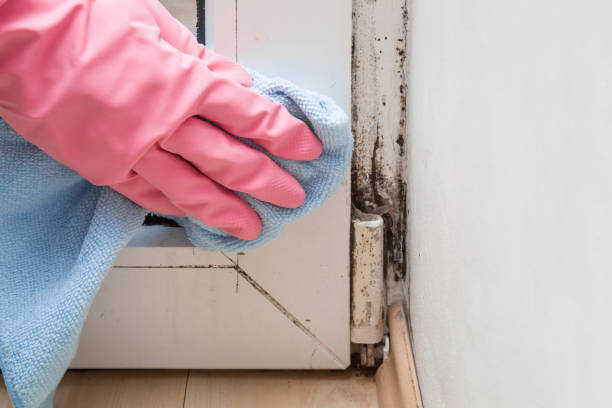
Mold needs 3 things to grow including moisture, nutrients, and proper temperature. Nutrients include multiple types of materials including wood, cotton, and drywall. When mold grows on these materials it is actually slowly eating away at the materials as seen in the photos below. The black mold is present on top of and inside of this wood panel and is growing within the crevices of the panel eating away at each and every area slowly but surely.
There are many more facts about mold and some will be covered through the rest of this post. Next, we will briefly cover the effects mold has on health.

As stated before, regardless of your health, mold can affect you. Chances of it having a negative impact on your health has to do with the length of time you are exposed, the severity of the issue, and the condition of your health. Since mold can grow within 24-48 hours, situations where there is major water damage, for example in a flood, it is best to address the issue immediately and either vacate or remove the affected materials.
The most common symptoms of mold exposure are those similar to a cold including coughing, sneezing, watery eyes, and skin irritation. More advanced symptoms include fatigue, nausea, pain in joints, and loss of appetite. As if that wasn’t enough, there are more severe symptoms including memory loss, brain damage, cancer, and death. The results are plain and simple. Mold is BAD for your health.
There are many articles and publications that inform you of different actions you can take to rid your body of mold exposure. Some are doctor recommended and some are more natural ways as simple as drinking a combination of freshly juiced fruits and vegetables. Regardless of which path you take, it’s best to be proactive in ridding your body of toxins.
As you can see, there is much to learn about mold. We have many blog posts that can help people understand all aspects of mold including how it effects your pets, mold in rental properties, and even the effects of toxic mold syndrome.
Our final words of advice: Don’t ignore mold because it will continue to grow. Don’t cover it up because it will come back. Always consider your health when dealing with mold and never wait to address it. “Don’t just guess it, test it!”
What is Mold Awareness Month
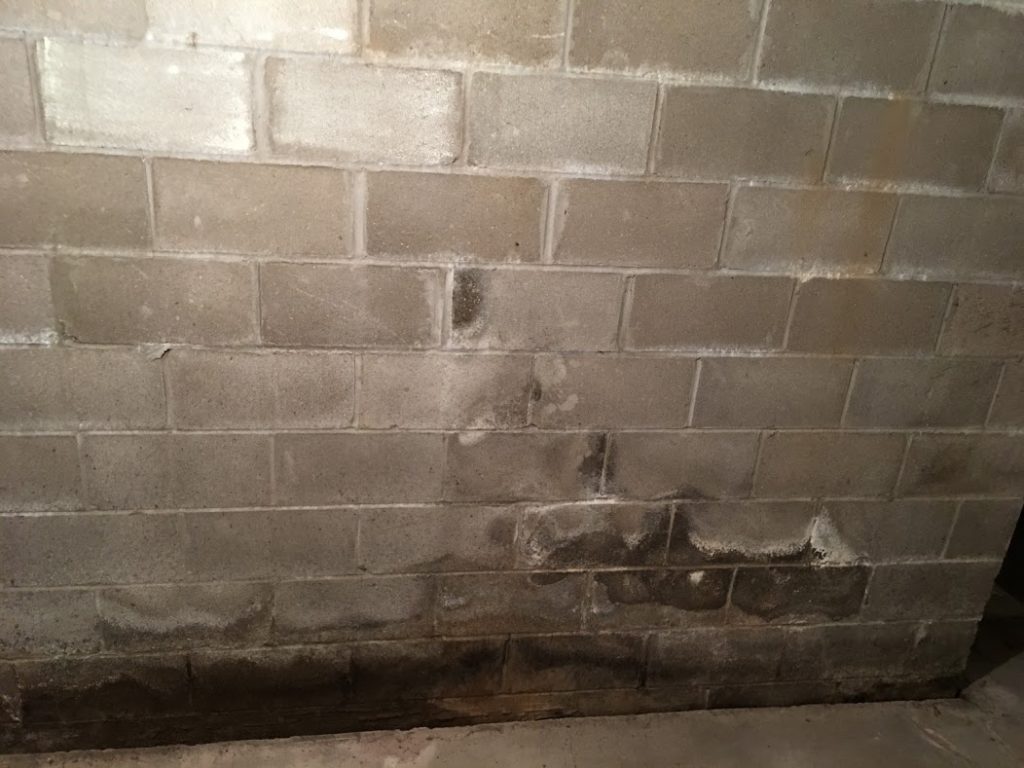
Mold Awareness Month is a national month that recognizes the importance of getting to know and understand the impacts of mold. There are many things you want to keep in mind when you first learn about mold and that is the dangers, the signs, and how to handle it.
Mold can be very dangerous to your health and symptoms of black mold range from feeling a little stuffed up and drowsy all the way to being so sick you can’t get out of bed. Based on the severity of the mold and the length of time exposed, mold can cause liver failure, cancer, and even death.
The signs of mold (also known as mould) vary greatly, but if you follow these few guidelines, you will be able to see the obvious signs. First, use your nose. If you can smell an old, musty, thick, and dirt smell, you may be smelling mold. If you see black-ish spots or brown stains on your walls, in corners, or on your ceiling, you may have found a mold problem. Also, pay attention to how you feel. How you feel on a daily basis can say a lot about your surroundings. If you feel sick at home, you may have a “sick home”. If you feel sick at work, the building you work in could have major issues. The key is, is to be aware of your surroundings.
Colors and types of mold
Back mold is what people think of when they think of mold, but the reality is, mold comes in many different colors. The main colors you would see are green, gray, brown, and white. Mold comes in many forms, colors, and types and they’re all different. White mold (like white vs black blog) is difficult to recognize as mold and is often looked over as nothing to be concerned about, but of course, this is not always the case. To determine whether or not the mold you are seeing is dangerous or not, get it tested by a professional.
Types of mold that are bad & molds to worry about
Not all “molds” should be treated the same. One major confusion is that mold and mildew are the same. Mildew is not something to be severely concerned about because it isn’t dangerous to your health in small quantities. You typically see mildew in bathrooms, particularly between shower tiles and on the ceiling. Regular cleaning with an antibacterial soap can prevent mildew from getting out of control. Food mold is also not a big deal IF you don’t eat it.
The mold removal process is a process that only a licensed professional should conduct. It requires testing, taping off affected areas, and air cleansing machinery. There are specific bags you need to dispose of affected materials, protective safety gear, and other very specific precautions that need to be taken in order to not spread mold spores and properly remove all traces of mold.
Mold Awareness Month is among us in its 7th consecutive year to raise awareness about the health risks linked to the presence of mold. With that being said, we would like to inform you of how important it is to be aware of mold in your surroundings, and how to solve your mold problem from start to finish.
September is Mold Awareness Month
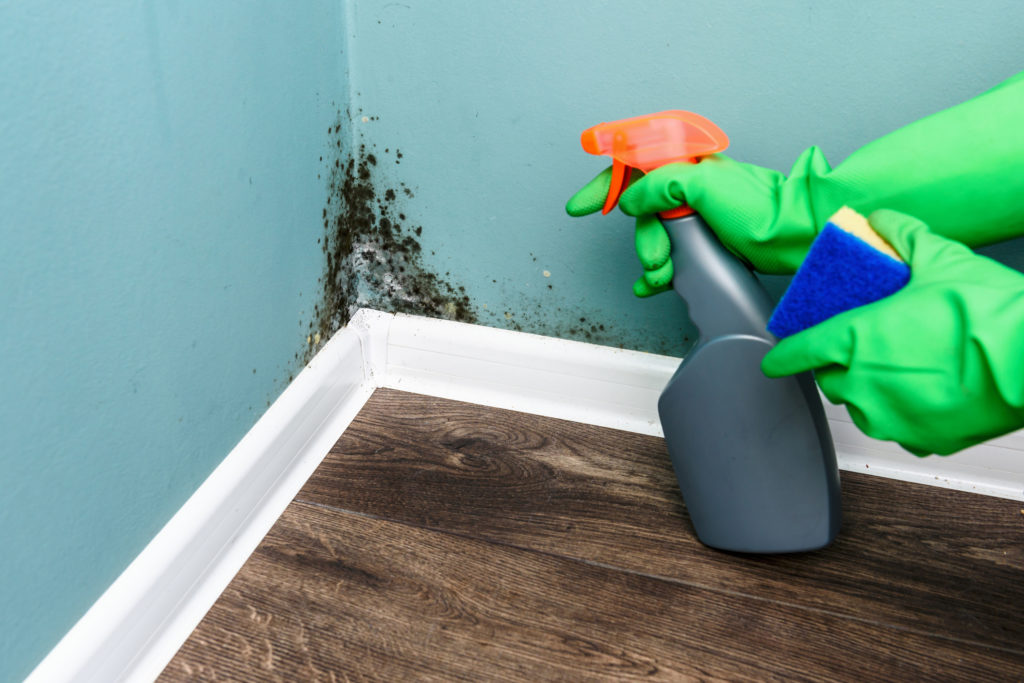
Keeping your home safe and mold free contributes greatly to the health of your family members and the prosperity of your home. Mold comes in many forms and can grow in many different places. Mold can grow on virtually any organic material as long as moisture and oxygen are present, which means mold can grow almost EVERYWHERE.
Mold is omnipresent and you may have noticed that you’ve always seen it around. This could cause you to question, “I’ve never felt the effects of mold, what makes it dangerous?” Reactions to mold sometimes don’t happen instantly. The immediate (Level 1) symptoms of mold exposure are sometimes the same as cold symptoms & common ailments such as headaches, watery eyes, sneezing and vomiting. The second stage of mold exposure symptoms (Level 2) include chronic fatigue, loss of appetite, ear infections and even bronchitis. The most advanced (Level 3) symptoms which give mold its nickname “the silent killer” are blindness, brain damage, cancer and death. All of the above symptoms can be prevented by having your home inspected and properly remedied.
Below are the steps to take if you find your home may have a mold problem:
5 STEPS TO SOLVING YOUR MOLD PROBLEM
Step 1: Write down which areas in your home may have mold and what the mold looks like. This information will be requested is important to have on hand.
Step 2: Call your homeowner’s insurance company to find out what mold coverage you have within your policy. You may also need to contact your Homeowners Association and ask if certain areas in your home covered under them, or your personal insurance.
Step 3: Call your local mold detection service company and set up an appointment to have your home checked. This process is known as a Pre-Remediation Assessment. Be sure to only use a certified mold inspector.
Step 4: After the results are in, choose a remediation company to extract the mold from your home. This process is called Mold Remediation. Again, be sure to only use a certified/licensed remediation company to ensure the proper removal of materials containing mold.
Step 5: Schedule a Post Remediation Verification Assessment to obtain a Clearance Certificate to allow new construction (carpet replacement, building, etc.…) to begin and to ensure all mold is removed.
After these 5 steps, you will have the relief of knowing that you are living in a mold-free environment. Not only is it important to be aware of mold issues in your home, but it can also be an issue in buildings of any kind including businesses, churches, schools and restaurants. Be sure to take care of mold issues at the earliest sign, as this can make all the difference to protect those around you and your investments.
Black Mold vs White Mold
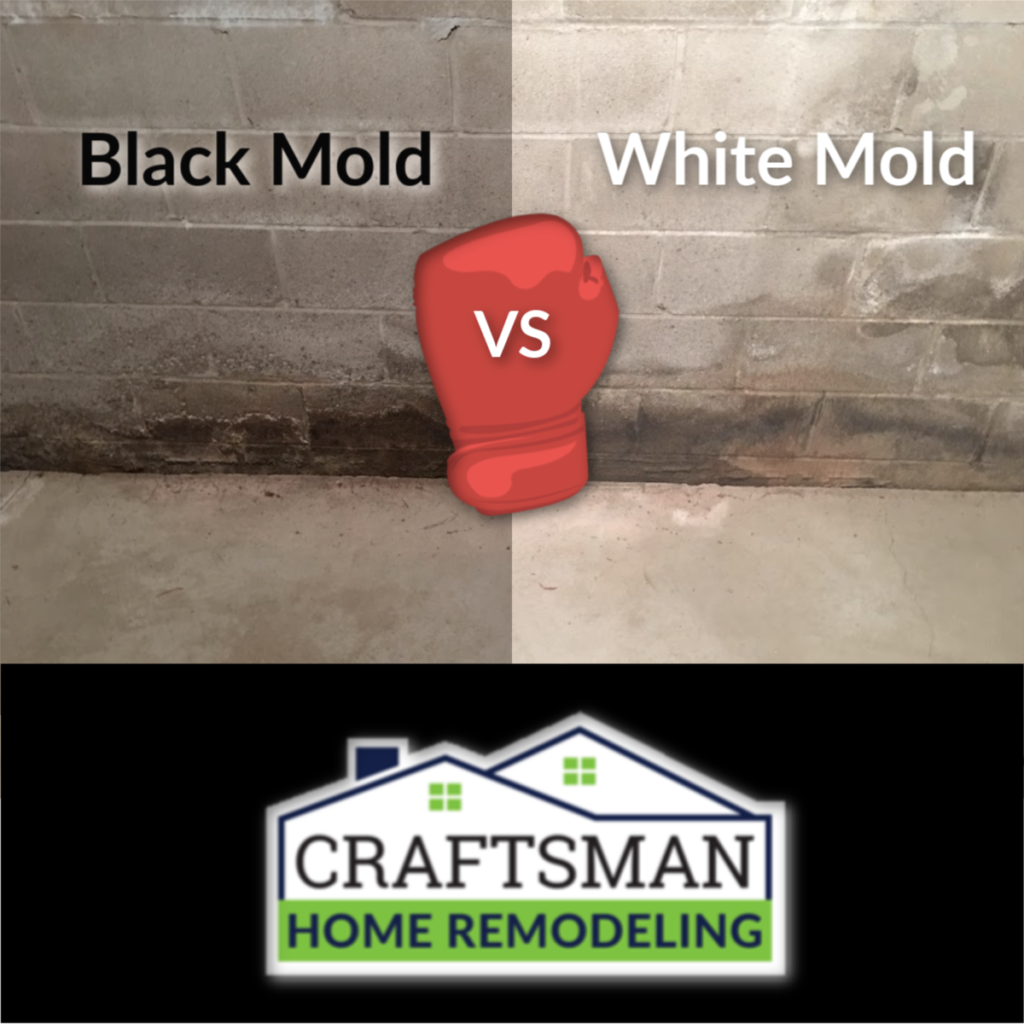
Mold comes in many different forms, shapes, sizes, smells, colors, you name it, the differences are endless. The most speculated types of mold are white mold and black mold with the black mold being the most common. A frequently asked question that sometimes goes unanswered is, what are the differences between white mold and black mold?
First, we’re going to give you the rundown on black mold. Black mold, technically termed Stachybotrys chartarum, is both dangerous and toxic to both humans and pets. The way black mold forms is by feeding off natural food sources including wood and dust in moist areas. The CDC offers a large collection of information on black mold and common questions asked. The most common places in homes and buildings black mold forms are under sinks, in basements, inside walls, and around windows and AC units. Often times, some molds can look just like black mold but actually are very dark green, gray, and brown and just assumed to be black mold. Depending on whether or not people living in homes with black mold are experiencing symptoms and how severe the infestation is, will determine if you need to leave completely, or just avoid areas where black mold is found. We suggest airing on the side of caution and removing yourself and pets from homes and buildings where black mold is found.
Industry professionals have long debated the categorization of white mold. White mold can be considered the beginning stage of many different types of mold. To simplify this, white mold can be a young black mold or a growing Stachybotrys chartarum. White mold is also an adult type of mold. Generally, white mold is identified as what you see growing on food and plants at the beginning stages before it turns into a different color but is also prevalent in homes and buildings. Just like black mold, people should consider white mold dangerous and get it tested as soon as possible. If it is mold at the beginning stages, it is best to catch it before it spreads and releases spores into the air.
To conclude the differences between black mold and white mold is mold is mold and it should be treated the same. Take the same precautions with white mold, as you would with black mold. Always air on the side of caution when dealing with the mold of any color. Be sure to reach out to mold professionals in your area when you find mold whether it be white, black, blue, gray, or green.
Mold Killers On The Market

Any sign of mold in your home can seriously impact your day-to-day life. It can appear in your shower, countertops, tile floors, drywall or cause serious damage to your roof, windows, pipes and even the air. But we’re here to tell you that you don’t have to live with this! So what are we here to talk about? MOLD PRODUCTS!
Sometimes it feels like there are so many solutions out there. Products that claim to get rid of mold, mildew, and clean your air. Luckily, we have outlined some of these home remedies and are highlighting them to show you what is in the market making these claims. These examples come with the disclaimer so please don’t confuse these solutions for problematic mold that is airborne or is causing damage to your home. In this case, we 100% recommend you call a professional to assess the situation and identify the source.
Mold Armor
This brand offers an array of mold removal products. Mold Armor uses a powerful bleached-based formula that claims to kill mold without scrubbing on multiple surfaces including interior walls, bathroom surfaces or exterior areas such as brick, vinyl siding or concrete.
How to use:
Simply spray on to the desired surface, let stand 10 minutes and rinse off.
Our thoughts:
Using bleach as an attempt to remove mold, won’t always work. Beach opaques mold which turns it white instead of getting rid of it. Using bleach on porous surfaces such as wood and concrete can permanently damage those surfaces and may eat away at them worse than mold would. Also, this product has a strong chemical base which can be dangerous when inhaled or used in closed areas.
Tilex Mold and Mildew Remover
With a heavier focus on interior areas, Tilex uses a Clorox bleach formula to kill mold, mildew and other bacteria found on any nonporous surface such as showers, counters, sinks, bathtubs or tiles. This spray also claims to remove tough mold stains commonly found in the home.
How to use:
Spray on surface affected by mold or mildew, let stand for five minutes and rinse off.
Our thoughts:
Again, bleach does not always solve the problem. Our advice would be to use an anti-bacterial soap to clean nonporous surfaces. Why? It’s in the name! ANTIBACTERIAL. Mold is a bacteria.
Concrobium Mold Control
This product claims to serve as a green approach to mold removal. Concrobium is a product that aims to prevent and eliminate mold without harmful chemicals or bleach. On the bottle, it mentions it can be used for general interior maintenance, damage repairs, and construction or renovation projects.
How to use:
Apply a thin layer of the solution to the desired surface and allow it to dry thoroughly. Once the surface is dry, wipe clean and use again for any residual staining. For mold prevention, leave a thin layer on the surface.
Our thoughts:
We like that this product contains no harmful chemicals and also claims to encapsulate mold spores. Even though it may get growing mold spores under control, It almost sounds too good to be true. we would probably classify this as more of a cleaning product rather than a mold killer.
Pro-Lab Mold Test Kit
While this product is not a “mold killer”, a home mold testing kit claims it can help you identify potential harmful and toxic mold spores. Pro-lab offers three types of testing: indoor air quality, AC/heating air test, and surface mold sampling. There is an optional mail-in lab analysis that can tell you the type of mold for an extra $40 fee.
How to use:
We won’t bore you with the exhaustive instructions, but each kit comes with all of your testing supplies and a detailed step-by-step guide. The entire process could take about an hour.
Our thoughts:
If your mold issue is unexplained growth, it’s best to consult with a professional and we’ll tell you why. Even though this test may tell you whether or not you have mold in your home, this test still doesn’t tell you where the mold is coming from. A lot of surface mold leads to a source of hidden mold which a lot of times is more severe than what meets the eye. If you’re using this test to cut cost and you find you have mold, you’re missing vital steps in the mold detection process including consulting, support with questions, expertise, and a post-remediation clearance test to ensure the mold is completely removed. After sampling and sending in the results, the cost difference is not that large and with professional mold testing, you get a professional with years of experience and more assurance.
Until we use these products and conduct the proper before and after testing, we will not be able to fully judge whether or not they work. A case study with a record of results is what is needed to really judge the effectiveness of each product. Remember, these products are only designed to rectify mold to a certain extent. We would always advise consulting with a professional, like Air Quality Assessors, to determine what type of mold you are dealing with to prevent any further damages.
Exposure To Mold During Pregnancy
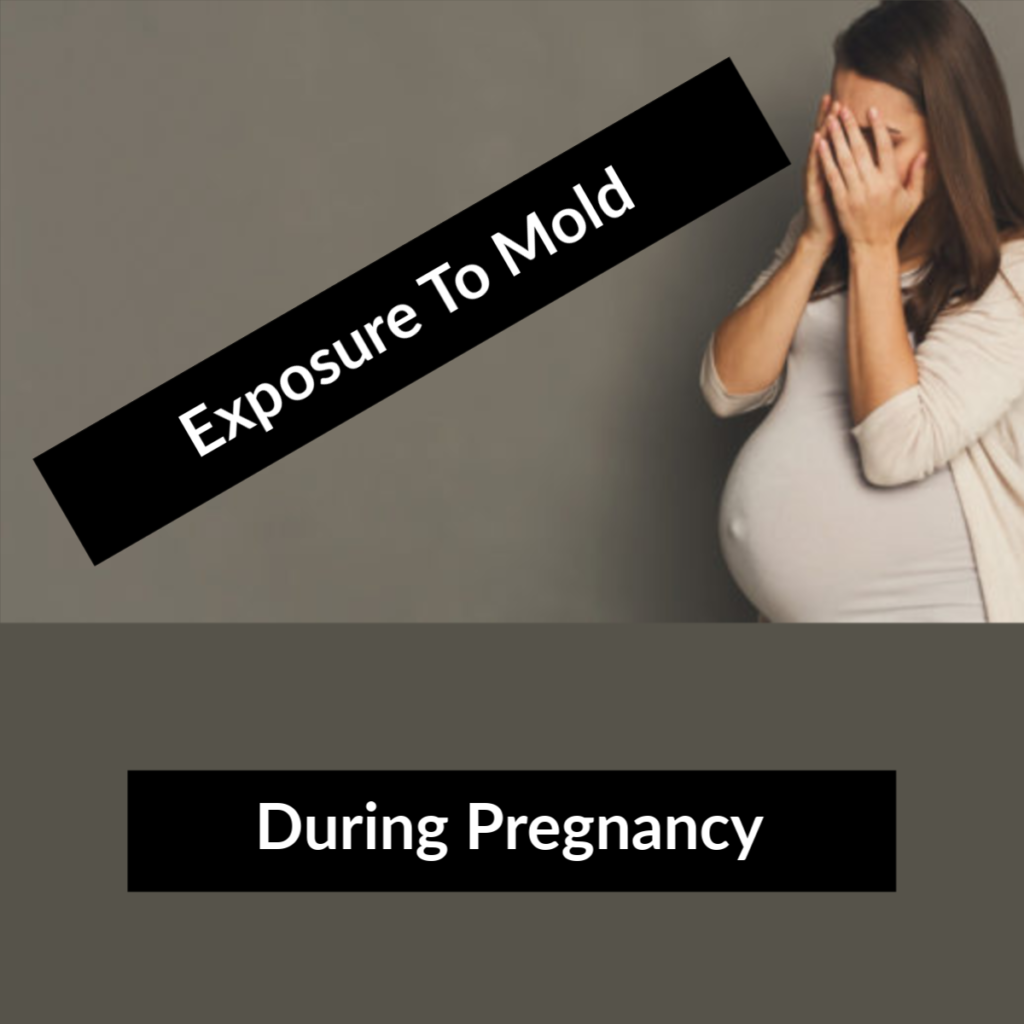
Pregnant mothers are very susceptible to the ill effects of molds in the environment because of their delicate condition. Infants, babies, and toddlers can also have significant reactions to even the smallest amount of mold. Everyone is actually exposed to mold (and mildew) every day but depending on the type and level determines if and how you will be affected. Black Mold is an unwelcome and dangerous guest in your home and one that should not be taken lightly, but it can be prevented and treated.
Becoming pregnant and having mold grow in your home can cause a multitude of problems for you and your baby’s health. Generally, molds cause respiratory problems such as asthma, skin rashes, unsightly smells and other allergic reactions. The Center for Disease Control (CDC) has stated that exposure to certain types of molds to individuals, particularly to pregnant women is quite dangerous. Studies have shown that of all the types of molds, the black mold (Stachybotrys Chartarum) is the most dangerous and exposure to it whether pregnant or not, can be a threat to one’s health. In an article by The New York Times reported on several similar occurrences of bleeding lungs in children from newborns to 10 months old due to mold exposure. Food mold is a whole other subject and definitely deserves some attention. For more information on food mold and what types you should avoid especially while pregnant, view this excerpt from the USDA.
Pregnant mothers will do anything to protect their growing babies. Unfortunately, it sometimes goes unknown when mold exposure occurs. Repeated and prolonged exposure to black mold can affect the physical development of a fetus. Severe maternal allergies secondary to black mold exposure can lead to serious damages to the growing fetus. This includes brain damage and problems with the respiratory system. Also, the exchange of gases is not facilitated in a manner that is sufficient to supply the oxygen supply of the mother. If this happens, less is delivered to the fetus thus causing alarm since oxygen is necessary for optimum brain and respiratory functions. Women who are pregnant can suffer birth defects, miscarriage, and infertility later on.
Other symptoms when pregnant can include:
- Fetal Paralysis
- Allergy symptoms
- Accidental mold ingestion leading to dehydration
Mold exposure can impact your health in many ways. Mold releases lethal mycotoxin spores and can cause neurological breakdown, pulmonary decay, immune system degradation, skin irritation, and even death. The spores released by black mold attach your brain’s neurons—incapacitating your mental ability. The reaction to black mold can be tremors, mood swings, and other neurological shifts. If you’re exposed for long enough, black mold spores can shut down your organs, incapacitate your immune system, and damage your brain—resulting in death. Other symptoms of black mold exposure include fatigue, headaches, seizure, tremors, mood swings, confusion, fever, eye irritation, sneezing, rashes, coughing, bleeding of the lungs, and sometimes death.
When experiencing mold within your home, there are short term/long term effects your babies and toddlers can experience. Exposures to molds growing indoors for babies are often associated with:
- Nasal and sinus congestion
- Cough/Sore Throat
- Chest tightness
- Dyspnea (breathing difficulty)
- Asthma (or exacerbation of it)
- Epistaxis (nosebleed)
- Upper respiratory tract infections
- Headache
- Skin and eye irritation
Long-term exposure to indoor molds on babies can develop more severe symptoms:
- Immunosuppression
- Cancer
- Hypersensitivity pneumonitis/pulmonary fibrosis
- Pulmonary injury/hemosiderosis (bleeding)
- Neurotoxicity
- Hematologic and immunologic disorders
- Hepatic, endocrine and/or renal toxicities
Very commonly, mold smells like mildew and must, so it can be detectable even when you can’t see it. To be on the safe side, it is reiterated that pregnant women should stay away from molds. Pregnancy should be a pleasant experience unmarred by the presence of trouble-causing molds. Therefore, it will be best to get help from mold inspectors, like Air Quality Assessors, to help you act on such situations before they worsen.
Share this Post

